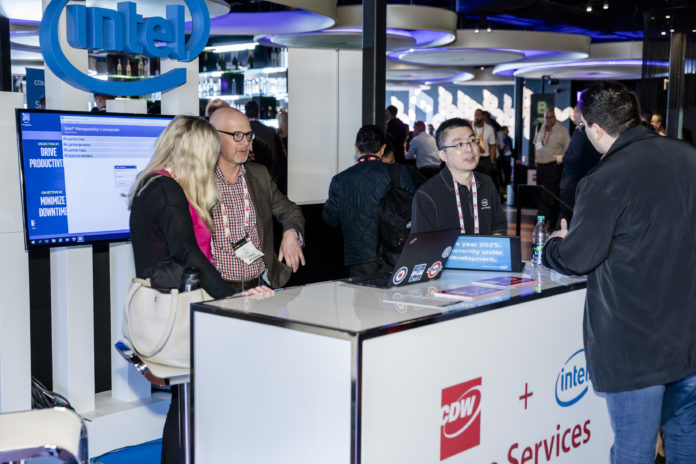Many Canadian organizations have an incredibly useful IT management technology at their fingertips, but very few of them know it exists. That was the message Intel’s Acting Country Manager for Canada, Phil Vokins, conveyed to attendees at a session during BTEX 2019 in Toronto.
Intel and CDW Canada want to make more customers aware of Intel’s vPro technology, which enables remote PC management, regardless of whether the operating system (OS) is running, or whether the machine is powered on. “It’s been around for about 10 years, but many people have never heard of it,” Vokins said. “It’s a really cool technology but we haven’t necessarily done a thorough job of marketing it.”
VPro is a chip-based technology that’s available in all of Intel’s business-class devices. It’s ideal for companies with upwards of 50 seats, or for customers concerned about protecting sensitive data, Vokins said. It’s also not a technology that’s restricted to computers. Any device with a vPro-capable chip can benefit from remote management, including digital signage and Internet of Things-enabled technologies. “VPro is really a platform for IT asset control,” Vokins explained.
The easiest way to check to see if a PC is vPro-capable is to look at the sticker on the machine with the Intel processor information, said Eric Chong, Enterprise Client Technical Sales Specialist with Intel Canada. The sticker should say which processor the computer has, along with the fact it has vPro technology. There are a range of use cases for the technology, Chong explained, including remote power control, repairing machines where the OS has crashed or waking dormant computers to patch them.
For example, he said, Intel is working working with large federal government agency that was having trouble effectively patching its 40,000 machines. With vPro activated, the agency is now able to remotely wake its fleet of computers, patch them and then shut them down again.
Chong cited another example where a public sector organization was sending BIOS updates to machines out in the field. Some of the machines froze up after the update and the organization had to send technicians out in person to manually change a setting on each of the crashed machines so they could accept the update. The agency is now implementing vPro, so in future it can repair the machines remotely in the event another issue occurs.
Vokins noted Intel customers don’t have to purchase additional hardware in order to use vPro – they just need to activate it. “We want to get people enabling it because we want to make sure they’re getting the most out of their technology.”
Please bookmark this page for more coverage of BTEX 2019.







